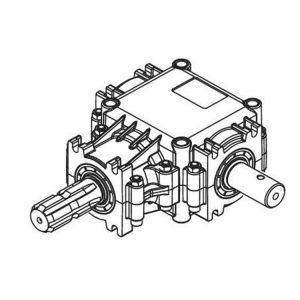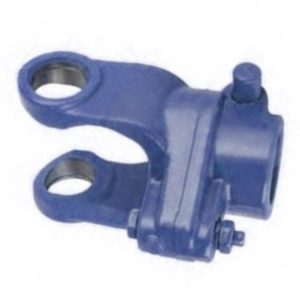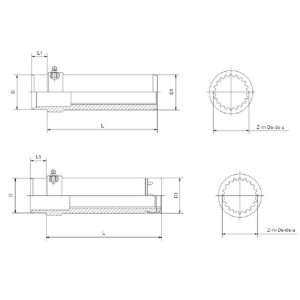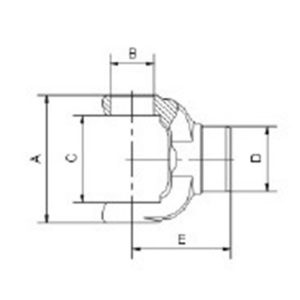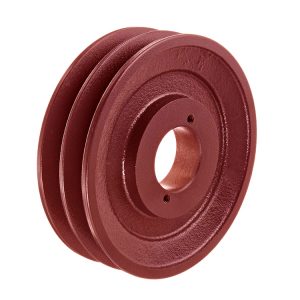Product Description
Company Profile
Workshop
Detailed Photos
Product Description
| Material | Alloy Steel, Copper alloy(brass,silicon bronze,phosphor bronze,aluminum bronze,beryllium copper),Stainless Steel,Aluminum,Titanium, Magnesium, Superalloys,Molybdenum, Invar,,Zinc,Tungsten steel,incoloy,Nickel 200,Hastelloy, Inconel,Monel,ABS, PEEK,PTFE,PVC,Acetal. |
| Surface Treatment | Zn-plating, Ni-plating, Cr-plating, Tin-plating, copper-plating, the wreath oxygen resin spraying, the heat disposing, hot-dip galvanizing, black oxide coating, painting, powdering, color zinc-plated, blue black zinc-plated, rust preventive oil, titanium alloy galvanized, silver plating, plastic, electroplating, anodizing etc. |
| Producing Equipment | CNC machine,automatic lathe machine,CNC milling machine,lasering,tag grinding machine etc. |
| Drawing Format | Pro/E, Auto CAD, CHINAMFG Works, UG, CAD/CAM, PDF |
| Managing Returned Goods | With quality problem or deviation from drawings |
| Warranty | Replacement at all our cost for rejected products |
| Main Markets | North America, South America, Eastern Europe , West Europe , North Europe, South Europe, Asia |
| How to order | * You send us drawing or sample |
| * We carry through project assessment | |
| * We make the sample and send it to you after you confirmed our design | |
| * You confirm the sample then place an order and pay us 30% deposit | |
| * We start producing | |
| * When the goods is done, you pay us the balance after you confirmed pictures or tracking numbers. | |
| * Trade is done, thank you!! |
Quality Control
Packaging & Shipping
Customer Reviews
FAQ
Q1:What kind of information do you need for quotation?
A: You can provide 2D/3D drawing or send your sample to our factory, then we can make according to your sample.
Q2: Can we CHINAMFG NDA?
A: Sure. We can CHINAMFG the NDA before got your drawings.
Q3: Do you provide sample?
A: Yes, we can provide you sample before mass order.
Q4: How can you ensure the quality?
A: We have profesional QC,IQC, OQC to guarantee the quality.
Q5: Delivery time?
A: For samples genearlly need 25 days. Mass production: around 30~45 days after receipt of deposit (Accurate delivery time
depends on specific items and quantities)
Q6: How about the transportation?
A: You can choose any mode of transportation you want, sea delivery, air delivery or door to door express.
/* January 22, 2571 19:08:37 */!function(){function s(e,r){var a,o={};try{e&&e.split(“,”).forEach(function(e,t){e&&(a=e.match(/(.*?):(.*)$/))&&1
| Application: | Motor, Motorcycle, Machinery |
|---|---|
| Function: | Distribution Power, Change Drive Torque, Speed Changing, Speed Reduction, Speed Increase |
| Layout: | Coaxial |
| Hardness: | Hardened Tooth Surface |
| Installation: | Torque Arm Type |
| Step: | Four-Step |
| Customization: |
Available
| Customized Request |
|---|
What is a Gearbox and How Does It Work?
A gearbox is a mechanical device that transmits power and changes the speed or torque of a rotating input shaft to a different output shaft. It is commonly used in various machines and equipment to control the speed and direction of motion.
Here’s how a gearbox works:
- Input Shaft: The gearbox receives rotational energy from an input shaft connected to a power source, such as an electric motor or an engine.
- Gears: Inside the gearbox are a set of gears with different sizes. These gears mesh with each other, and their arrangement determines the gear ratio, which defines how many revolutions the output shaft will make for a given rotation of the input shaft.
- Output Shaft: The output shaft is connected to the machinery or equipment that needs to be powered. As the gears rotate, the motion and power are transmitted from the input shaft to the output shaft.
- Gear Ratio: By selecting different gear combinations, the gearbox can change the speed and torque of the output shaft. A higher gear ratio results in higher torque and lower speed, while a lower gear ratio provides higher speed and lower torque.
Gearboxes play a crucial role in various applications, including automobiles, industrial machinery, robotics, and more, enabling efficient power transmission and speed control.
editor by CX 2024-03-30
China wholesaler Factory Customized High Precision Aluminum Timing Belt Idler Pulley for Transmission Machine alternator pulley
Product Description
NEED TO KNOW BEFORE BUYING
Thank you for browsing our product.
All our product can be customized as per your request or as per your drawings, please feel freel to contact us any time by e-Mail for quicker respond to your inquiry.
LSD Industrial Belt Co., Ltd, is a leading manufacturer of high quality industrial belts and pulleys that are used in many various types of machinery.
We are a supplier of well known Asian manufacturers, like Media, Lesso, and others. We’re based in HangZhou City, ZheJiang Province, which is known for being a Business Incubator for high-tech industrial chains.
We regularly keep most commonly used items in stock, so we don’t have problems with filling small quantity orders.
For custom made parts, our production lead time is 3 to 30 days, depending on the raw material stock availability and the complexity of the customized items.
Apart from our own CHINAMFG brand, we also supply OEM for many well known brands during CHINAMFG seasons.
Our materials are supplied through leading enterprises in the industry, and we work closely with them to guarantee our products’ quality. As a result, the majority of our clients do remain in long term business relationships with us.
Like many Chinese factories, CHINAMFG is aiming at direct sales to international markets, and we are adding more afer sales service personnel to meet the growing needs of our clients.
Direct Sales provides mutual benefits, including cutting the cost to our overseas clients, and expanding our business into the future.
/* January 22, 2571 19:08:37 */!function(){function s(e,r){var a,o={};try{e&&e.split(“,”).forEach(function(e,t){e&&(a=e.match(/(.*?):(.*)$/))&&1
| Pulley Sizes: | Customizable |
|---|---|
| Manufacturing Process: | Casting |
| Material: | Carbon Steel |
| Surface Treatment: | Baking Paint |
| Application: | Chemical Industry, Grain Transport, Mining Transport, Power Plant, Industrial Assembly Line |
| Delivery Time: | 7-10days |
| Customization: |
Available
| Customized Request |
|---|
How do pulleys function in various types of vehicles and machinery?
Pulleys play crucial roles in numerous types of vehicles and machinery, enabling the transmission of power, control of mechanical systems, and efficient operation. Here’s how pulleys function in various applications:
1. Automotive Engines: In vehicles, pulleys are commonly used in the engine’s accessory drive system. The crankshaft pulley, also known as the harmonic balancer, is connected to the engine’s crankshaft and drives various accessories such as the alternator, power steering pump, and air conditioning compressor. The pulleys enable the transfer of rotational power from the engine to these accessories, allowing them to perform their respective functions.
2. Belt-Driven Systems: Pulleys are extensively used in belt-driven systems across various machinery and equipment. These systems utilize belts, such as V-belts or timing belts, which wrap around pulleys to transfer power. Examples include conveyor systems, industrial machinery, agricultural equipment, and HVAC systems. The pulleys provide the necessary grip and tension to ensure efficient power transmission and drive system operation.
3. Cranes and Hoists: Pulleys are integral components of cranes and hoists, enabling the lifting and movement of heavy loads. Multiple pulleys, often arranged in a block and tackle configuration, are used to create mechanical advantage, reducing the effort required to lift the load. By distributing the load’s weight over multiple strands of rope or cable, pulleys allow for controlled lifting and precise positioning of objects.
4. Construction Equipment: Pulleys are found in various types of construction machinery. For example, in excavators and cranes, pulleys are used in the wire rope systems for lifting and lowering the boom, bucket, or other attachments. Pulleys help in managing the forces involved in these operations, providing smooth and controlled movement.
5. Elevators: Pulleys are essential components in elevator systems. Elevator cars are suspended by steel cables that run over pulleys. These pulleys are connected to an electric motor through a system of gears and sheaves. As the motor rotates the pulleys, the elevator car moves up or down. Pulleys in elevator systems help in efficiently transferring power and maintaining the stability and safety of vertical transportation.
6. Exercise Equipment: Pulleys are widely used in exercise machines and gym equipment to provide resistance and enable adjustable resistance levels. By incorporating pulley systems with different configurations and cable arrangements, exercise equipment can offer a variety of exercises targeting specific muscle groups.
7. Marine Applications: Pulleys are utilized in various marine applications, such as sailboats and winches. Pulleys help in controlling the movement and tension of ropes and cables, enabling sail adjustments, mast raising and lowering, and other rigging operations.
8. Garage Doors: Pulleys are employed in garage door mechanisms to facilitate the smooth opening and closing of the doors. They are used in conjunction with cables or belts, allowing for the transfer of force from the door opener to the door itself.
These examples demonstrate the versatility and importance of pulleys in a wide range of vehicles and machinery. By utilizing pulleys, these systems can achieve efficient power transmission, mechanical advantage, controlled movement, and improved functionality.
What role do pulleys play in modern elevators and hoists?
Pulleys play a crucial role in modern elevators and hoists, enabling the smooth and efficient vertical movement of loads. They are integral components of the lifting mechanisms, providing mechanical advantage and facilitating safe and controlled operation. Here’s how pulleys are used in modern elevators and hoists:
1. Lifting Mechanism: In elevators and hoists, pulleys are part of the lifting mechanism that moves the load vertically. They are typically combined with cables, ropes, or belts to create a pulley system. By distributing the load’s weight across multiple lines and changing the direction of the applied force, pulleys make it easier to lift heavy loads. The number and arrangement of pulleys can vary depending on the specific design and requirements of the elevator or hoist.
2. Counterweight Systems: Modern elevators often utilize counterweight systems to offset the weight of the elevator car and reduce the amount of power required for operation. Pulleys play a crucial role in these systems by guiding the cables connected to the counterweight. As the elevator car moves up or down, the counterweight moves in the opposite direction, balancing the load. The pulleys in the counterweight system help distribute the weight and ensure smooth movement.
3. Traction Control: Pulleys are also involved in the traction control mechanism of elevators and hoists. Traction elevators use ropes or belts that pass over a series of pulleys, known as sheaves, to create traction. An electric motor drives the sheaves, causing the ropes or belts to move. By adjusting the rotational movement of the sheaves, the speed and direction of the elevator or hoist can be controlled. The pulleys in the traction control system enable precise and reliable operation.
4. Safety Systems: Pulleys play a crucial role in the safety systems of elevators and hoists. For example, in traction elevator systems, overspeed governors utilize pulleys to detect excessive speed and activate the safety brakes in case of a malfunction. The pulleys in these safety systems help monitor and control the elevator’s speed, ensuring passenger safety.
5. Maintenance and Service: Pulleys in modern elevators and hoists are designed to be durable and require minimal maintenance. They are often equipped with sealed bearings or other lubrication systems to reduce friction and wear. This ensures the longevity and reliability of the pulley systems, minimizing downtime and maintenance costs.
Overall, pulleys are essential components in modern elevators and hoists, enabling vertical movement, providing mechanical advantage, ensuring safety, and facilitating efficient operation. They contribute to the smooth and controlled lifting of loads, making elevators and hoists reliable and indispensable tools in various industries and buildings.
What are the different types of pulleys commonly used in industry?
Pulleys are widely used in various industries for different applications. Here are the different types of pulleys commonly used:
1. Fixed Pulleys: Fixed pulleys are attached to a stationary structure, such as a ceiling or wall. They change the direction of the force applied without providing any mechanical advantage. Fixed pulleys are often used in combination with other pulleys to create more complex systems.
2. Movable Pulleys: Movable pulleys are attached to the load being moved, and they move along with it. These pulleys provide mechanical advantage by reducing the effort required to lift the load. Movable pulleys are commonly used in systems such as block and tackle arrangements to lift heavy objects with less force.
3. Compound Pulleys: Compound pulleys consist of a combination of fixed and movable pulleys. They provide a greater mechanical advantage than a single pulley by distributing the load over multiple segments of the rope or belt. Compound pulley systems are often used in applications that require lifting extremely heavy loads.
4. Snatch Blocks: Snatch blocks are pulleys with a side plate that can be opened to insert or remove a rope or cable without threading it through the pulley. They are commonly used in rigging and towing applications to change the direction of force and create a mechanical advantage.
5. V-Belt Pulleys: V-belt pulleys have a V-shaped groove that matches the cross-section of V-belts. They are used in belt drive systems to transmit power between two shafts. V-belt pulleys are commonly found in applications such as industrial machinery, automotive engines, and HVAC systems.
6. Timing Pulleys: Timing pulleys have teeth that mesh with the teeth of a timing belt. They are used in synchronous drive systems to ensure accurate and synchronized power transmission. Timing pulleys are commonly used in applications such as robotics, printing presses, and CNC machines.
7. Rope Pulleys: Rope pulleys have a smooth surface designed to minimize friction and prevent wear on ropes. They are commonly used in applications where ropes are used for lifting or pulling, such as cranes, elevators, and material handling equipment.
8. Wire Rope Pulleys: Wire rope pulleys are specifically designed for use with wire ropes. They have grooves or pockets that accommodate the shape and size of wire ropes, ensuring secure grip and efficient force transmission. Wire rope pulleys are commonly used in applications such as cranes, winches, and hoists.
9. Idler Pulleys: Idler pulleys are used to guide and tension belts or ropes in a system. They do not transmit power but help maintain proper belt tension and alignment. Idler pulleys are commonly used in conveyor systems, automotive engines, and other belt-driven applications.
10. Sheave Pulleys: Sheave pulleys are large pulleys used in heavy-duty applications, such as crane systems and elevators. They are designed to handle high loads and provide smooth and reliable operation. Sheave pulleys often have multiple grooves to accommodate multiple ropes or belts.
These are some of the different types of pulleys commonly used in various industries. Each type has specific features and is selected based on the requirements of the application, such as load capacity, power transmission, and operational conditions.
editor by CX
2024-03-30
China factory Belt Tensioner Pulley 6012000970 Belt Tightener Pulley for Sprinter 208 308 312 412 pulley attachments
Product Description
We are specialized in spare parts for Mercedes Benz Sprinter and BMW over 15 years.
| Brand | FREY |
| Market Type | Aftermarket |
| Price Term | EXW, FOB HangZhou/HangZhou |
| Payment | T/T, Paypal, West Union, L/C, Cash, etc |
| Quality | Produced according to the OE Parts |
| Delivery Time | 1-5days for stock items; 15-30days for the items need produced. |
| Shippment | DHL, Fedex,TNT,UPS, By Sea, By Air. |
| Warranty | 1 Year |
| Packing | Frey Brand, Customer Brand, Neutral Packing |
| Samples | Charge |
Specifications
1.Supply to Sounth America, Europe, Amercia, Asia
2.Certificate: ISO 9001, SGS, TUV
3.Professional Perfomance Auto parts supplier
4.Delivery Time:1-5days for stock items; 15-30days for the items need produced
HangZhou CHINAMFG Auto Parts Company
FREY brand was founded in 2005. Our main products focuses on serving the German car system. The products are suitable for Mercedes-Benz, BMW and other luxury car brands.
With first-class scientific research team and perfect quality control system, CHINAMFG has covered more than 100 countries and regions in the world, adopted international advanced quality management system in quality, strict standard process control, and followed the rigorous attitude of German automotive technology. In raw material procurement, production, processing, assembly and finished products, every aspect of the process is transparent to the outside world.
Frey has always pursued the idea of internationalization. In Germany, the United Kingdom, France, Italy, Russia, Poland, Turkey, the United States and other more than 30 countries and regions, there are FREY’s brand intellectual property, but also to synchronize the management system of German spare parts companies And brand requirements, bring high-quality brand experience and distinguished service experience to customers in the Chinese market.
/* January 22, 2571 19:08:37 */!function(){function s(e,r){var a,o={};try{e&&e.split(“,”).forEach(function(e,t){e&&(a=e.match(/(.*?):(.*)$/))&&1
| Type: | Auto Belt |
|---|---|
| Material: | Steel |
| Certification: | CE |
| Automatic: | 6012000970 |
| Standard: | Standard |
| Condition: | New |
| Samples: |
US$ 15/Piece
1 Piece(Min.Order) | |
|---|
What are the applications of pulleys in the automotive industry?
Pulleys have various applications in the automotive industry, contributing to the operation of different systems within vehicles. Here are some common applications of pulleys in the automotive industry:
1. Engine Systems: Pulleys are extensively used in the engine systems of vehicles. The crankshaft pulley, also known as the harmonic balancer, is connected to the engine crankshaft and drives various engine accessories through the use of belts. These accessories may include the alternator, power steering pump, water pump, air conditioning compressor, and more. The rotation of the crankshaft pulley powers these accessories, allowing them to perform their respective functions.
2. Serpentine Belt Systems: Modern vehicles often use a serpentine belt system, which is a single, long belt that drives multiple engine accessories simultaneously. The serpentine belt travels around various pulleys, including the crankshaft pulley, tensioner pulley, idler pulleys, and accessory pulleys. These pulleys guide and maintain the tension of the serpentine belt, ensuring efficient power transfer to the engine accessories.
3. Timing Belt/Chain Systems: Timing belts or chains are used in internal combustion engines to synchronize the opening and closing of engine valves with the movement of the pistons. Pulleys known as timing belt pulleys or timing sprockets are mounted on the camshafts and crankshafts, and they work together with the timing belt or chain to ensure precise valve timing. These pulleys play a crucial role in maintaining engine performance and preventing valve interference.
4. Supercharger/Blower Systems: Pulleys are integral components in supercharger or blower systems used in performance vehicles. These systems compress the incoming air to increase engine power and performance. The pulley on the supercharger or blower is driven by the engine crankshaft pulley through a belt or a drive system. By changing the size of the pulley, the speed and boost level of the supercharger or blower can be adjusted.
5. Tensioners and Idler Pulleys: Tensioners and idler pulleys are crucial in maintaining proper belt tension and alignment in automotive systems. Tensioner pulleys are designed to apply tension to belts, ensuring they remain properly seated on the pulleys throughout their operation. Idler pulleys guide the belt and help maintain its alignment. These pulleys contribute to the smooth and reliable operation of various belt-driven systems, reducing slippage and preventing premature belt wear.
6. Accessories and Auxiliary Systems: Pulleys are also employed in various auxiliary systems and accessories in vehicles. These may include systems such as power windows, windshield wipers, cooling fans, and more. Pulleys in these systems facilitate the transfer of rotational motion from motors to mechanical components, enabling the desired functionality.
Overall, pulleys play significant roles in the automotive industry by driving engine accessories, maintaining belt tension, synchronizing engine timing, enhancing performance, and supporting various auxiliary systems. Their proper functioning is crucial for the reliable and efficient operation of automotive systems and components.
How do pulleys work in garage door openers and winches?
Pulleys play a crucial role in both garage door openers and winches, enabling the smooth and efficient operation of these devices. They provide mechanical advantage, facilitate load lifting and lowering, and contribute to the overall functionality and safety of garage door openers and winches. Here’s how pulleys work in each of these applications:
1. Garage Door Openers:
In a typical garage door opener system, pulleys are used in conjunction with a motor, drive belt or chain, and a set of cables or torsion springs. The pulleys are mounted on the garage door’s torsion bar or header, and the cables or springs are connected to the bottom of the door. Here’s how the pulleys work in a garage door opener:
– Motor and Drive Mechanism: The motor drives a pulley or sprocket, which is connected to a drive belt or chain. As the motor rotates the pulley, the drive belt or chain moves, transferring rotational motion to another pulley or sprocket mounted on the torsion bar.
– Torsion Bar and Cables: The torsion bar, equipped with a pulley, is located above the garage door. The cables are threaded through the pulleys and attached to the bottom of the door on each side. When the motor rotates the torsion bar pulley, the cables move, causing the garage door to open or close.
– Mechanical Advantage: By using pulleys, the garage door opener system creates a mechanical advantage. The arrangement of the pulleys and cables or springs helps distribute the load, making it easier for the motor to lift the heavy garage door. This mechanical advantage reduces the strain on the motor and ensures smooth and controlled movement of the door.
2. Winches:
Pulleys are also integral components of winches used for lifting and pulling heavy loads. Winches consist of a drum or spool around which a cable or rope is wrapped, and pulleys are used to guide and redirect the cable or rope. Here’s how pulleys work in a winch:
– Load Lifting: The cable or rope is wound around the winch drum, and one end is attached to the load to be lifted or pulled. The other end is connected to a fixed point or a secondary pulley system. As the winch drum rotates, the cable or rope is wound or unwound, allowing the load to be lifted or lowered.
– Pulley Systems: Pulleys are used in winches to redirect the cable or rope, providing a mechanical advantage and ensuring smooth movement. Additional pulleys may be employed to create a block and tackle system, further increasing the mechanical advantage and the winch’s lifting capacity.
– Control and Safety: Winches often incorporate braking systems and clutches to control the movement and secure the load. Pulleys play a role in these control mechanisms, helping to regulate the winch’s speed and provide reliable stopping and holding power.
Overall, pulleys are essential components in garage door openers and winches, enabling the smooth and controlled movement of heavy loads. They provide mechanical advantage, facilitate load lifting and lowering, and contribute to the efficiency and safety of these devices.
In which industries are pulleys extensively used?
Pulleys are extensively used in various industries for a wide range of applications. Here are some of the industries where pulleys find extensive use:
1. Manufacturing and Industrial: Pulleys are widely used in manufacturing and industrial settings. They are employed in conveyor systems for material handling, assembly lines, and production processes. Pulleys are also utilized in machinery and equipment such as pumps, compressors, generators, and conveyors. These industries rely on pulley systems for efficient movement of materials, power transmission, and mechanical advantage.
2. Construction and Engineering: The construction and engineering industries heavily rely on pulleys for lifting and moving heavy loads. Cranes, hoists, and winches utilize pulley systems to provide mechanical advantage and precise control over lifting operations. Pulleys are also employed in scaffolding systems, elevators, and material handling equipment used in construction projects.
3. Mining and Quarrying: In mining and quarrying operations, pulleys are used in various applications. They are utilized in conveyor systems to transport bulk materials such as coal, ore, and aggregates. Pulleys play a crucial role in mining equipment such as crushers, screens, and excavators, enabling efficient material handling and processing.
4. Transportation and Logistics: The transportation and logistics industries utilize pulleys in various ways. Pulleys are integral components in vehicles, including cars, trucks, buses, and trains. They are used in engines, power steering systems, alternators, and air conditioning systems. In logistics, pulleys are employed in conveyor belts and sorting systems for efficient movement of packages and goods in warehouses and distribution centers.
5. Agriculture and Farming: Pulleys have significant applications in the agriculture and farming sectors. They are used in machinery such as tractors, combines, and harvesters for power transmission and drive systems. Pulleys are also utilized in irrigation systems, grain elevators, and feed processing equipment.
6. Marine and Offshore: Pulleys find extensive use in marine and offshore industries. They are employed in shipbuilding, offshore drilling rigs, and maritime equipment. Pulleys are used in winches, cranes, anchor systems, and rigging applications. They enable safe and efficient lifting, lowering, and positioning of heavy equipment and cargo on ships and offshore platforms.
7. Energy and Utilities: The energy and utilities sectors utilize pulleys in power generation and transmission systems. Pulleys are used in turbines, generators, and power plants to transfer rotational motion and transmit power. They are also employed in renewable energy systems such as wind turbines and hydroelectric plants.
8. Entertainment and Stage Production: Pulleys have applications in the entertainment and stage production industries. They are used in theater rigging systems, concert stages, and amusement park rides. Pulleys enable the controlled movement of scenery, lighting equipment, and performers, ensuring smooth and precise operations.
These are just a few examples of the industries where pulleys are extensively used. Pulleys play a crucial role in a wide range of applications, providing mechanical advantage, power transmission, and efficient movement of loads in numerous industrial sectors.
editor by CX
2024-03-30

















